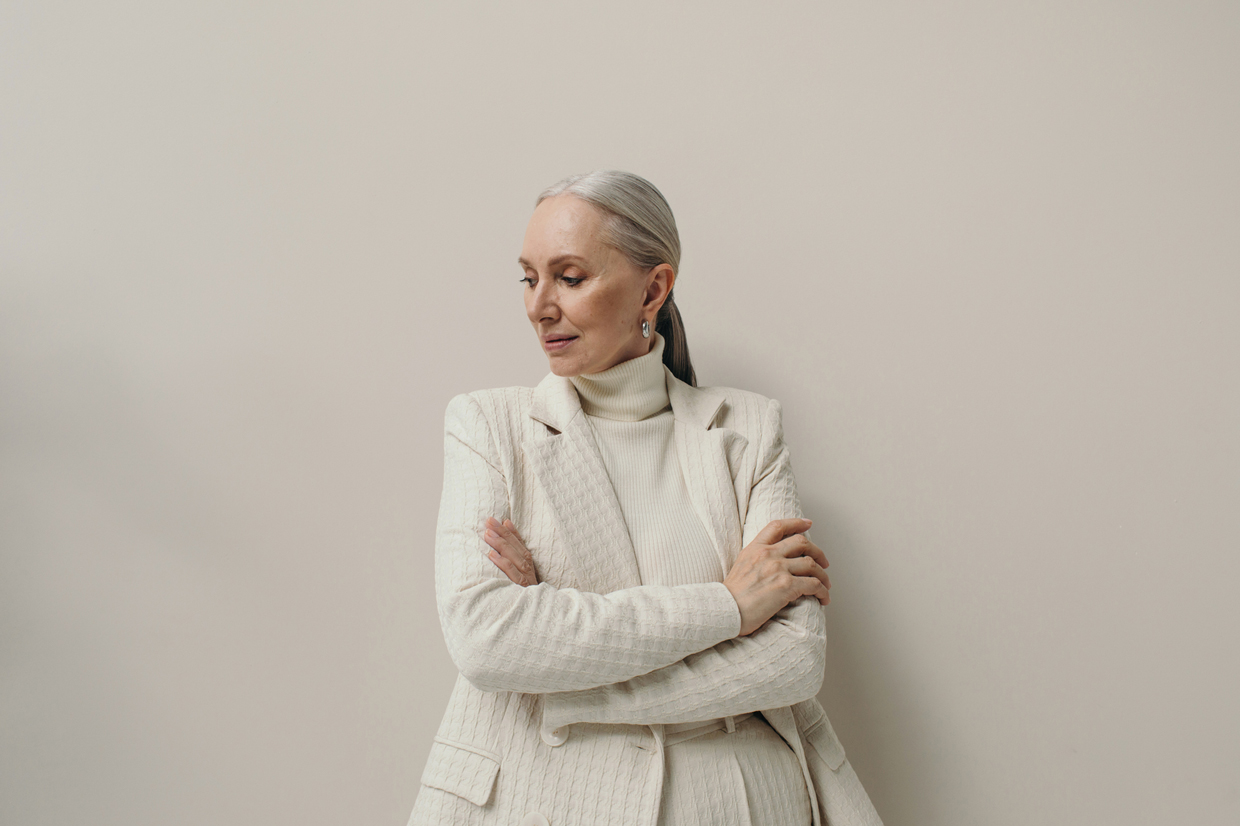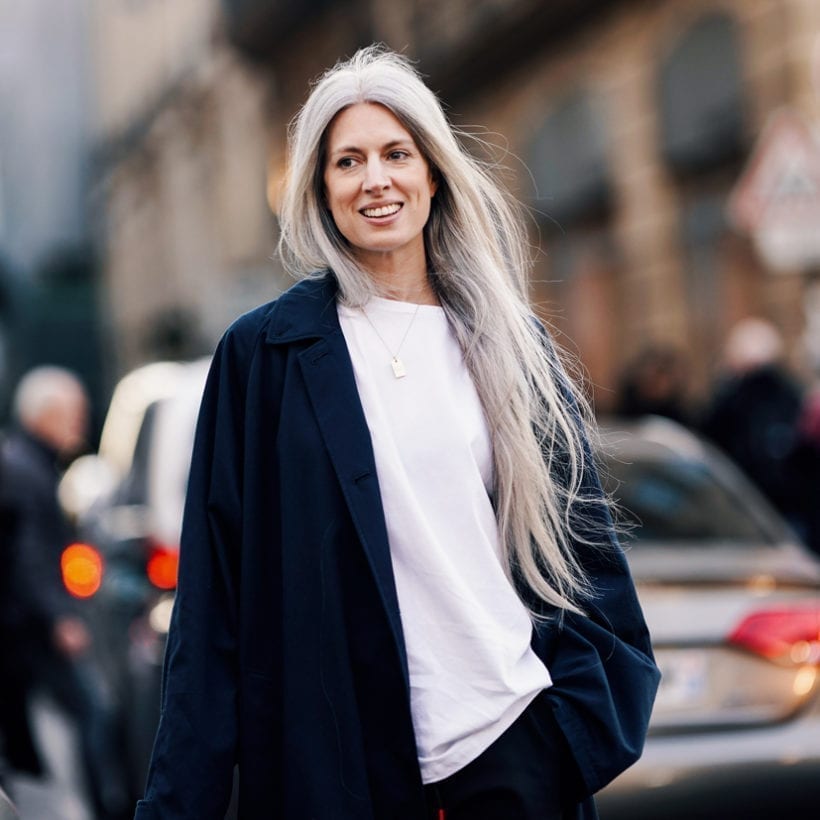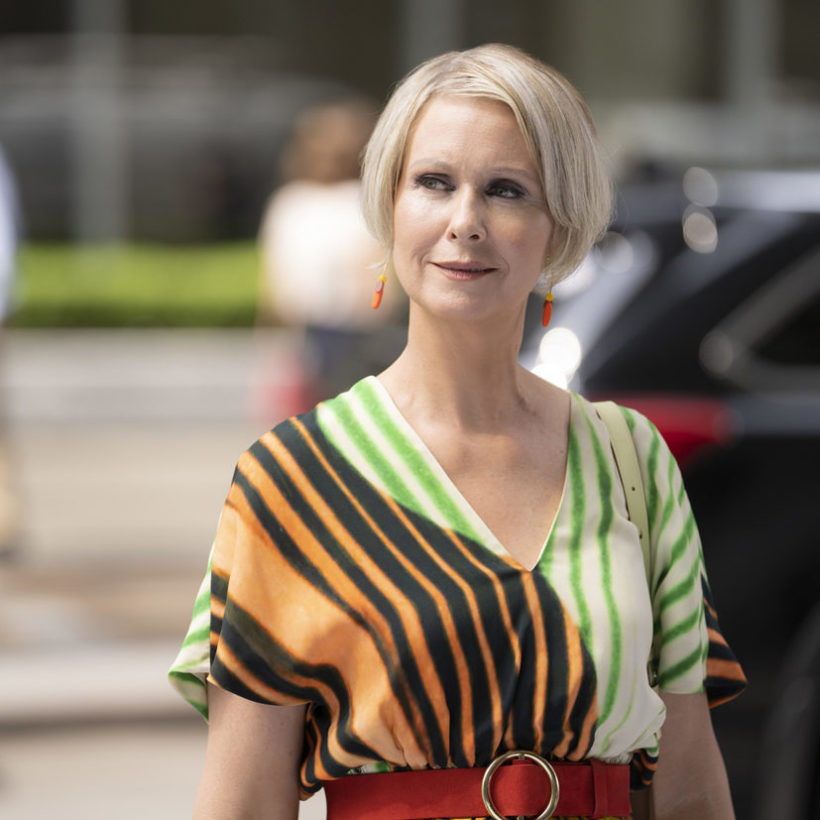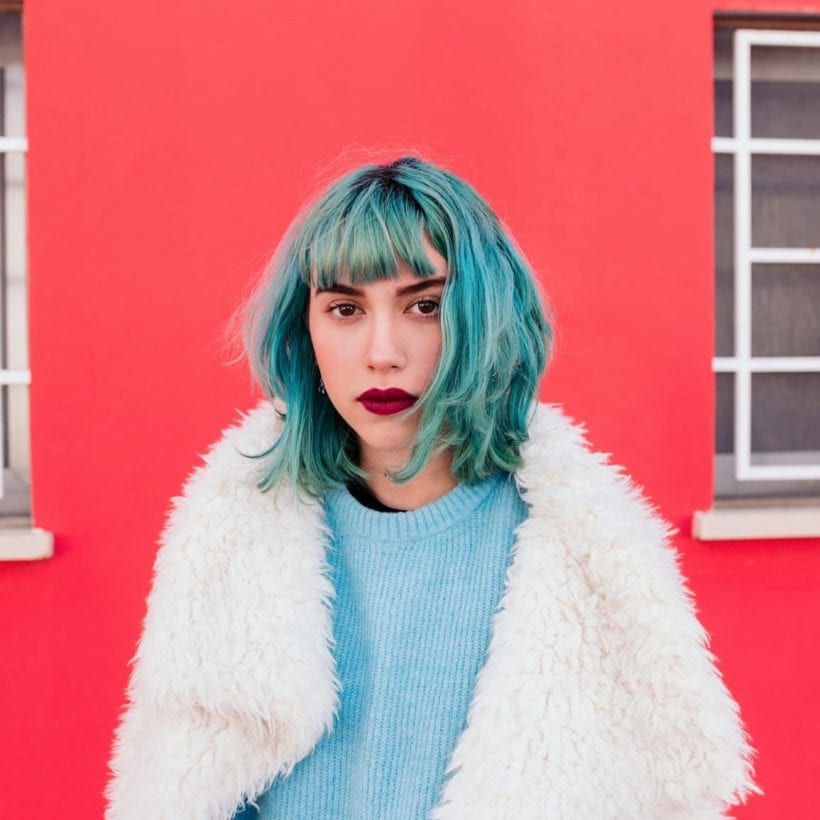Gray hair is inevitable. No matter how hard you try to fight it, it’s bound to happen once hair loses pigment. About 50% of all Americans will be gray by age 50. While the rate at how fast hair transitions to a paler shade of gray varies from person to person, the process is pretty much the same across the board.
Following in the footsteps of the granny gray color trend from a few years ago, more women are putting down the color and embracing their grays. Even celebrities like Andie MacDowell, Helen Mirren, and Jodie Foster are proudly wearing gray hair. But according to colorist Jack Martin, whose specialty is gray, social media shows us that there are ways to wear gray without looking aged or like your grandmother. “As a society, we need to get rid of these ideas about what gray symbolizes and means because it’s an old way of thinking,” he says. “Gray hair is pretty, and going natural is way healthier for your hair.”
Is the pandemic responsible for the recent shift in hues? Perhaps, since it forced many women to forgo their regular color appointments and accept more silvered tones. Plus, since we were all stuck at home, women had the luxury of time to grow out their grays gracefully, says Bumble & bumble. colorist Kitty Greller. As a result, some felt liberated and vowed never to color their hair again, while others hightailed straight to their colorist ASAP.
There’s still some required maintenance for those who choose to go au natural, just less than traditional hair colors. Regular glosses and toners, frequent haircuts, and products specific to gray hair are key in keeping the color looking shiny and not drab nor witchy.
Here’s everything you need to know about rocking gray strands and still looking sexy.
Going Gray
‘Graying’ is a natural biological process that almost all hair colors and types experience at some point in life. Yet, as colorist, Virtue Ambassador, and owner of Salon Bugatti, Chris Jones, explains, there are many contributing factors — think stress, medication, and lifestyle choices — that can lead to premature graying. However, changes to the amount and quality of melanin (the naturally-occurring pigment that gives hair its color) are the ultimate cause. With age, the body naturally synthesizes less melanin in the hair, causing the color to seemingly fade away and be replaced with gray, silver, or white strands.
Jones explains that because women begin to gray around the hairline first, they often assume their hair is gray throughout. But that’s not necessarily the case. “In reality, if they are 50% gray around their face, they might only be ten to 15% gray everywhere else,” he says.

Maintain the Tone
Just because you opt to wear your hair gray, silver, or white doesn’t mean it’s exempt from good hair care. One way to keep gray hair looking fresh and chic is with a gloss or toner, which creates warmth while neutralizing unwanted shades. “You have to be careful when coloring gray hair and be creative in camouflaging or blending the grays,” says FEKKAI colorist Daniel Sanchez. “Highlights, lowlights, and toning creates a nice look,” he says.
Adding a few highlights right around the front of the face adds dimension to soften the color for a natural look that doesn’t appear dull or flat. Martin says that there is often a line of demarcation between the new and old growth with gray hair, which bothers many. “Gray comes in a variety of shades, and based on the pattern of the roots and how the hair grows, we often need to break up the line of demarcation with some highlights,” he says. Yet, highlights on gray hair are done differently than other colors. “I do silver highlights around the face and at the crown and only use lightener and toner — no color, which makes hair brassy — to create contrast between the darker gray and the white-silver shade,” he shares adding that touch-ups are usually done every three to four months.
Bumble & bumble. colorist Zoe Wiepert points out that because gray hair has no pigment, it easily ‘sucks’ up any element — minerals from water, smoke, and product buildup — just like a blonde does. Even artificially colored shampoos, conditioners, and styling products can wreak havoc on your natural pigment, so use either clear or white products as not to stain your gray.
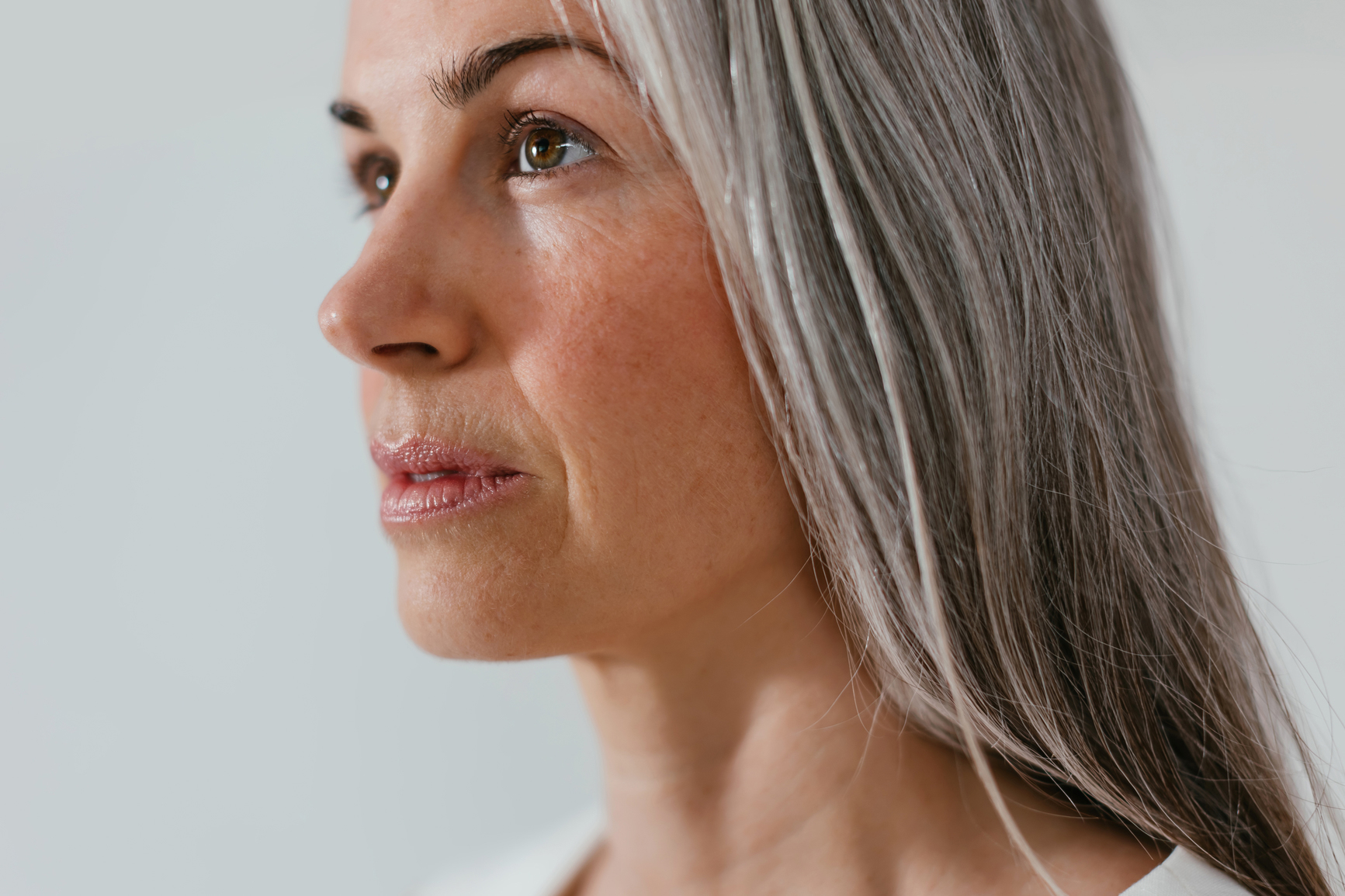
To keep gray hair lustrous, alternate between color-treated shampoo and purple shampoo, like Luseta Color Brightening Purple Shampoo, Virtue Labs ColorKick De-Brassing Shampoo, and Oribe Silverati Shampoo, which neutralize yellow and brassy tones. Additionally, clarifying shampoos and pre-shampoo scalp treatments, like Fekkai Apple Cider Detox Scrub and Sunday Riley Clean Rinse, eliminate buildup on the scalp. “Hair is like a diamond; its translucent and light passes through it, so removing product buildup, minerals, and pollutants allows light to pass through and promote shine,” Jones shares.
Cut It Out
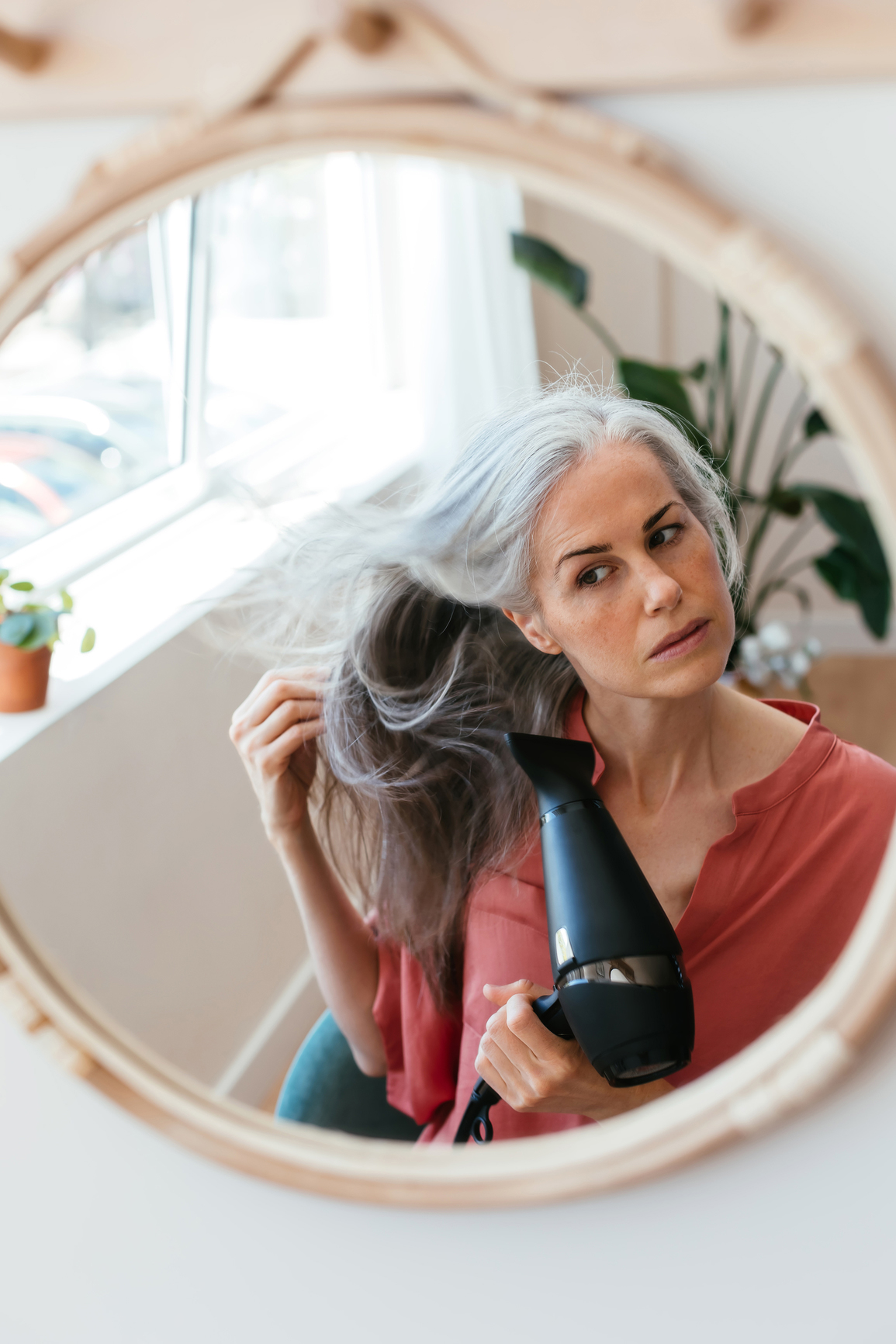
If sporting gray is new for you, yet your hair is still in the growing-in-while-it’s-growing-out-phase, invest in a good cut. “To wear gray hair, you need to have a great haircut and style,” says Sanchez. Gray strands command a modern, sophisticated look, but that doesn’t mean it has to be super short, either. Long styles work as long as the hair is healthy.
As far as heat styling is concerned, the less heat on the hair, the better since heat is an immense contributor to the yellowing of gray hair. “Products can deposit yellow tones in the hair, but if you are not careful when using heat-based tools without a heat protectant, the hair will burn,” Martin shares, adding that any yellowing signifies a burn mark. “If the yellowing is permanent damage, it needs to be cut out (when on the ends), or I have to rebleach that area to turn yellow to silver to match the rest of the hair,” he says.
Work With the Texture
A loss of melanin comes with less sebum (natural oils that lubricate the scalp and hair). “When the sebaceous glands produce less oil, the scalp and hair become drier, and the hair feels coarser,” says Jones. The dryer the scalp, the drier the hair, and on gray hair, that dryness can exacerbate frizz and uncontrollable waves and curls. Deep hydrating treatments like K18 and silicone-based smoothing products, such as Bumble & bumble. Hairdresser’s Invisible Oil, can help tame the hair. “As my clients’ hair texture changes, so do their haircare regimes,” he adds.
We only recommend products we have independently researched, tested, and loved. If you purchase a product found through our links, Sunday Edit may earn an affiliate commission.
